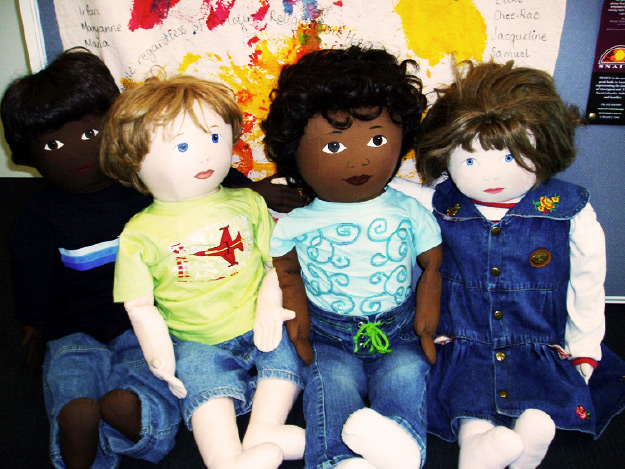About
What are Diversity Dolls?
Diversity Dolls are dolls that are specially designed to present social diversity and equity issues to children in two ways:
- First, they vary in physical characteristics such as skin tone, hair texture and colour and so can physically represent diverse gender and race characteristics.
- Second, each doll has its own ‘persona’: a life history that details its ‘race’, ethnicity, family culture, gender, special interests in stories about the doll. The dolls are used to enhance children’s connection to the stories and elicit their understandings of the social diversity and equity issues being raised through the doll’s stories.
Prejudice often gets in the way of people living together equitably. Learning to see and work with young children’s prejudices and biases is critical in working for equity in the 21st century. This website explores how Diversity Dolls can be used as a starting point for equity education with young children.

The origins of Diversity Dolls
Diversity Dolls have their origins in the work of USA early childhood educator Kay Taus. Kay developed what she called Anti-Bias Persona Dolls in the late 1980s. Kay was a member of the Anti-Bias Task Force that developed the Anti-Bias Curriculum (Derman-Sparks et al, 1989).
In 1998 members of the Centre for Equity and Innovation in Early Childhood (now the Equity and Childhood Program ) Glenda Mac Naughton, Heather Lawrence and Karina Davis drew on the work of Kay Taus and the Anti-Bias Task Force to develop the Diversity Dolls and the began to research the dolls and their use in Anti-Bias work with young children.
Diversity Dolls help children
- Experience, think about, enjoy & champion diversity
- Share their thinking about cultural & social diversity
- Learn about the diversity of others
- Problem-solve what’s fair & not fair.
Diversity Dolls help teachers
- Critically reflect on what’s fair & not fair with the classroom and the world
- Be activists for equity and social justice.